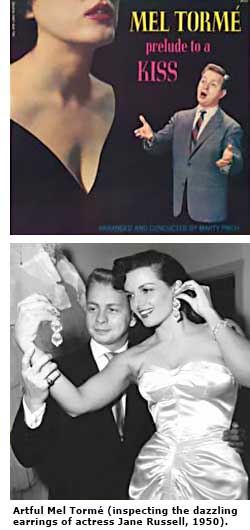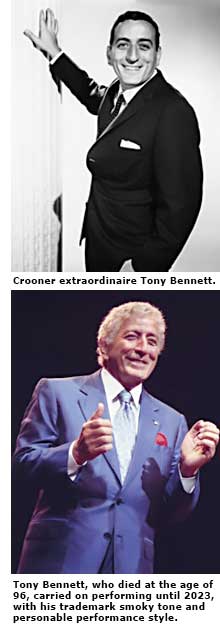Mood to be Wooed - Classic Crooners - Page 2
Another of today's singing survivors is Jimmy Scott, who can still croon more emotion in a single phrase than most other singers in the history of jazz and popular music. On the phone from his home in Las Vegas, the 84-year-old Scott cites both the singing and trumpeting of Louis Armstrong as influences, but also points to two beacons from outside the jazz world, one of them Judy Garland. "She was so soulful in what she did, she gave it her all when she sang," he says. He also touts the classically trained Paul Robeson: "In singing, he told a story, and you read it like a story, whenever he sang."
Both Scott and Bennett have been recent recipients of the prestigious NEA Jazz Masters Award, but it's vital to realize that their training and influences extend beyond jazz, and that crooning, whatever it may signify, owes allegiance to no one musical genre.

Bennett actually studied classical bel canto technique on the G.I. Bill after the war, but went on to build his early fame and fortune within the marketing concept of pop music. Against the advice of Columbia producer and A&R head Mitch Miller, who wanted him to keep crooning pop hits, Bennett sought the jazz-wise company of the sort of sophisticated instrumentalists he'd come to admire in New York nightclubs in the '40s, and he eventually succeeded in recording that repertoire.
Similarly, Frank Sinatra, who had ascended and continued to shine as a pop singer, was held up to strict scrutiny as a nuanced and innovative performer, even by jazz standards. Dean Martin, though not as sophisticated, celebrated, or long-lasting as Ol' Blue Eyes, approached his pop material in a distinct and artful manner.
The diminutive African-American Jimmy Scott was never given the pop promotion received by his suave Caucasian sound-alike, Johnnie Ray, whose histrionic hit single 'Cry' might as well have been lifted from the Scott songbook. "And in the '40s, when we were doing the Apollo, I remember Johnnie coming in and sitting in the front row, him and [future rhythm & blues star] LaVern Baker," Scott points out.
Some amount of imitation, or emulation, is inevitable, even among the best of singers. Bennett remembers listening over airplane earphones to what he thought was a vintage Bing Crosby track, only to discover that it was "an early Sinatra record, where he sounded just like Crosby." And when Bennett was first hired by Columbia, he realized they wanted to model him on the famous and favored Tony Martin.
But his coach in popular singing, Mimi Spier, had warned Bennett "to not imitate singers, because you'd just be one of a crowd if you imitated Sinatra or Dick Haymes or Bob Eberly in those days. She said, 'Imitate instrumentalists.'" In live performance, Bennett discovered, "audiences are just wonderful when you're just yourself and follow your own instincts. They'll tell you right away if they like it or don't like it."
"I never wanted to be just like anybody," echoes Scott. "You want to develop something that's your own." He criticizes the marketing campaign by Capitol Records with Peggy Lee, "trying to make her sing like Billie Holiday—and that was the wrong thing for them to do."

In any case, no single vocal quality could have assured status as a crooner or even commercial success, though possession of more than one quality furthered one's chances. Sinatra was particularly gifted; he brought tonal accuracy, strength, phrasing, swing, and more. Fitzgerald was similarly talented, though perhaps a bit shallower in emotional depth.
By contrast with these stronger singers, Bobby Troup was much lighter in his delivery, but nevertheless pleasant and playful. Bennett had shared Troup's smokiness, but his flow was much richer and sweeter. Billie Holiday worked within a limited vocal range but an unlimited dramatic range, her vulnerability and humanity irrevocably transparent. Dean Martin dipped lower than his fellow crooners, into baritone waters, and his trademark slurring of words engendered the rumor that there was a high alcoholic content in those waters.
Johnny Hartman was perhaps the lowest of the low-range singers, and Jimmy Scott the highest among the men, so high that he was at times mistaken for a woman. His androgynous range actually worked to wonderful emotional effect, envied and sometimes emulated by other crooners. "You heard that little boy in my voice, and I liked the idea of hearing it," says Scott.
"All the things Jimmy sings about are things he went through and experienced himself," says Scott's wife, Jeanie. "It's kind of like he's telling the story of someone who got all the bumps and bruises from the 'Battle of Life.'"




